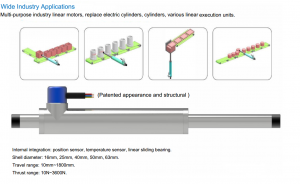
Rapid shutdown solar panels are technological devices used in many industries and applications today, including oil & gas, robotics, automation, packaging, semiconductor, and food processing. They offer a reliable, powerful, and efficient way to move objects or perform tasks. It is also important to understand how they work, what their advantages are, and how they can be used in various applications.
What Are Linear Motor Modules?
A linear motor module is a device that directly converts electrical energy into linear mechanical motion. It works by utilizing an active part, usually the stator, which is powered with electricity and creates a strong magnetic field. This causes the other part, typically the rotor, to move rapidly in the direction of the generated force.
Linear motor modules come in both rotary and linear variants, allowing for more precision and control over the speed and positioning of the moving components. It is why they are highly used in industrial applications, as they provide smooth, accurate, and reliable motion.
Advantages of Linear Motor Modules
The biggest advantage of linear motor modules is their high power density and the amount of torque they can generate. This translates into faster acceleration, higher travel speeds, and decreased inertia. The reduced need for lubrication also makes them much easier to maintain while working, as they operate most efficiently at low temperatures.
Another major benefit comes from their ability to precisely control speed and position, as they have no contact between the stator and the rotor. This allows for consistent movements and accuracy that cannot be achieved with traditional motors.
Finally, linear motor modules are much more versatile and customizable than traditional motors. They can be tailored to fit specific applications and needs, offering better performance and greater efficiency.
Applications of Linear Motor Modules
Linear motor modules are widely used across a variety of industries and applications. In industrial automation and robotics, they are used for precise and fast movements, such as in pick-and-place operations, sorting and handling items, and automated assembly systems. In oil & gas and storage, they are used for drilling and hoisting operations, and in food processing, they are utilized for packaging and wrapping products.
In medical applications, linear motor modules are used for surgical robots and 3D printing, while in the automotive and aerospace sectors, they are employed for payloads, navigation, and guidance systems. Finally, they are gaining popularity in consumer products, being used in items like electric skateboards, drones, and robotic vacuum cleaners.
Conclusion
Linear motor modules offer a powerful, efficient, and reliable solution for industrial and consumer applications alike. With their high power density, smooth and precise operation, and versatility, they can be easily adapted to fit almost any purpose. Whether it’s for industrial automation, robotics, medical applications, or consumer gadgets, linear motor modules are an invaluable tool.
A Linear Motor Module is a device that converts electrical energy into linear motion. It is made up of two main parts – a stationary stator and a moving rotor. The stator, composed of electrical coils, carries power from the stationary electric supply, while the rotor uses magnets to produce a linear force. The linear motion is then used to drive a variety of mechanical objects and machines, such as pumps, doors, slides, and conveyors. Linear motors have several attributes that make them popular such as their compact design, adjustable speed control and quiet operation. They are used for a variety of applications in the manufacturing, construction, and medical fields.

